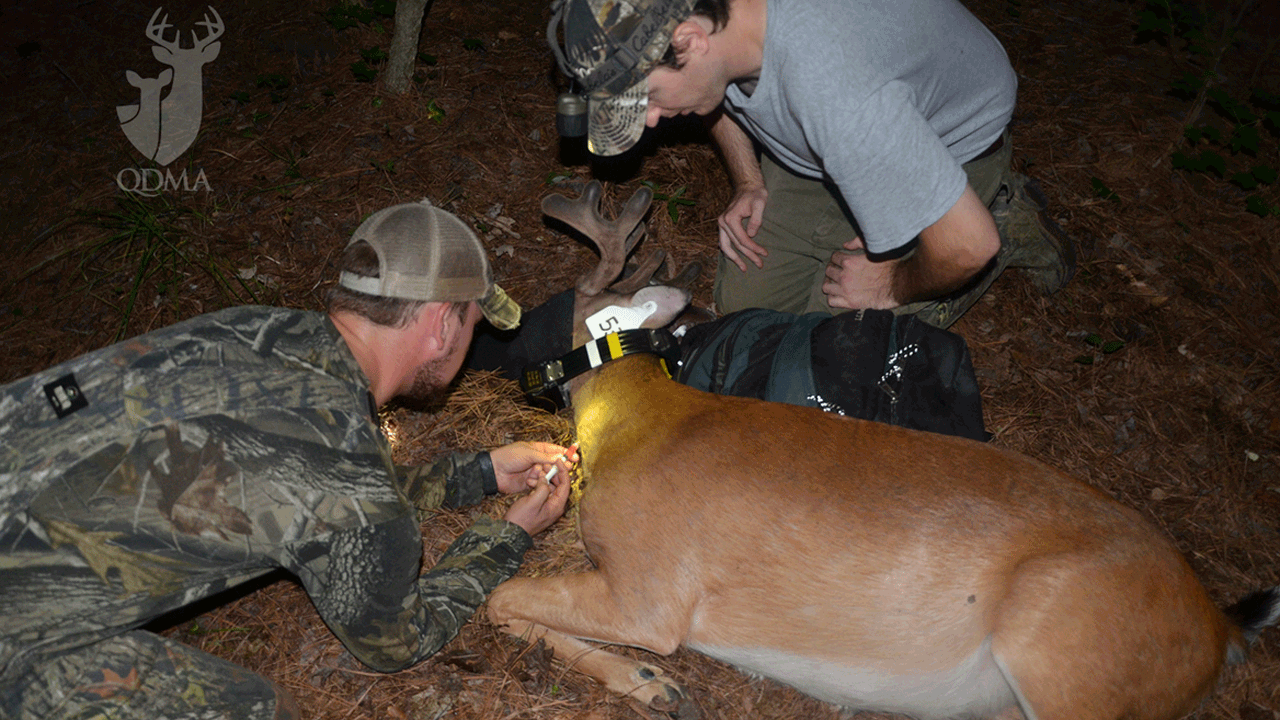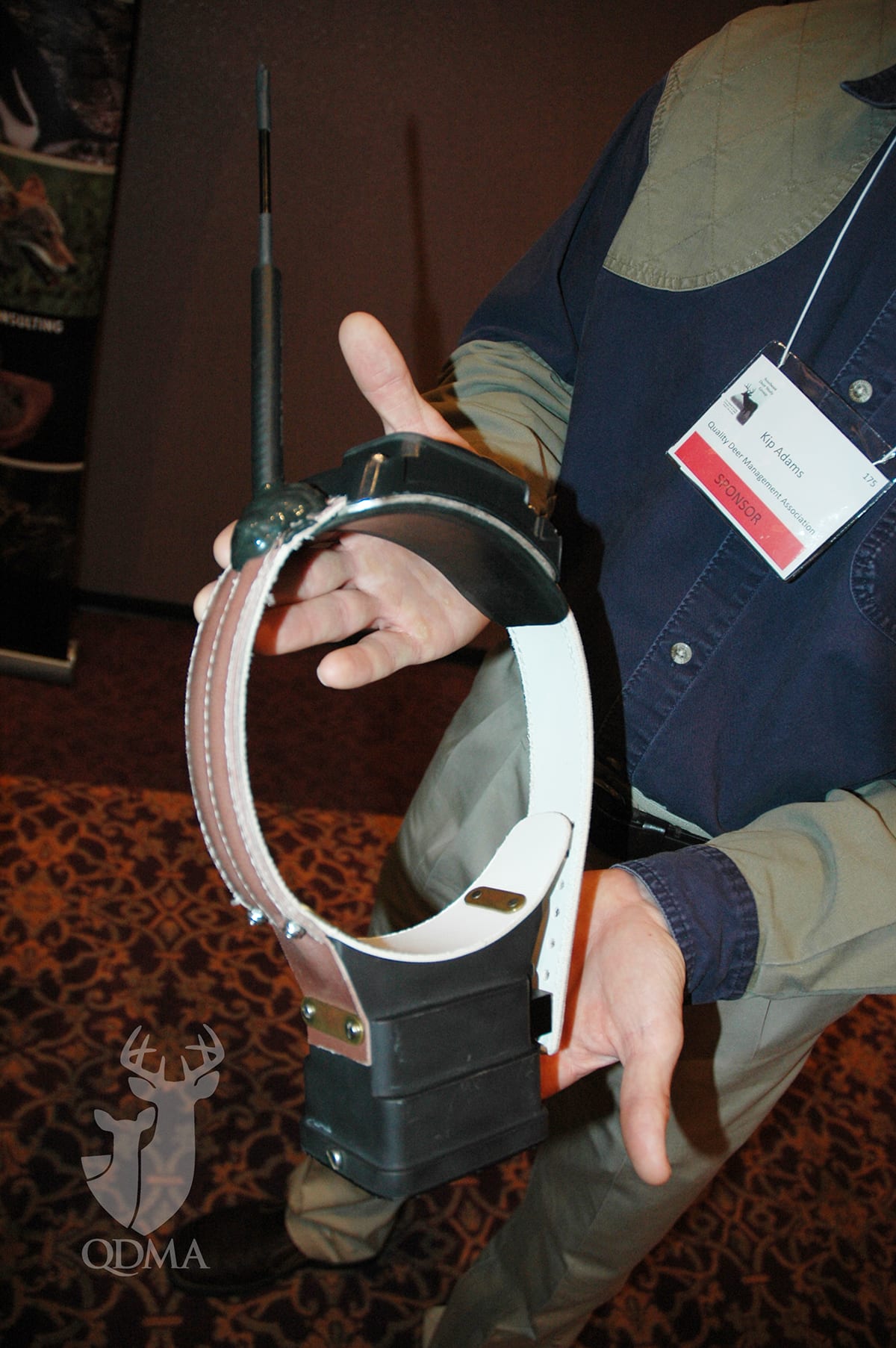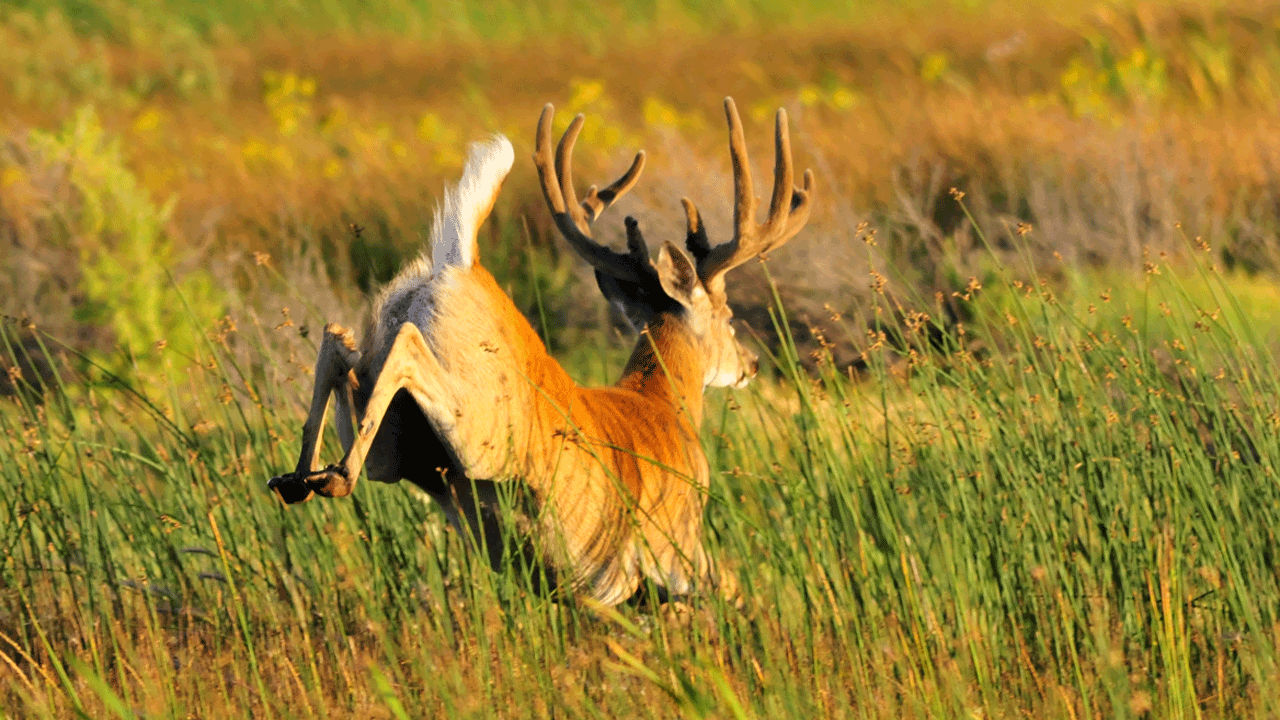Most deer hunters don’t need a scientist in a white lab coat to tell them that hunting pressure has a negative impact on deer movement. Especially if those deer are big, mature whitetail bucks. If you have more than a season or two under your belt, you’ve probably witnessed this phenomenon first hand. You know the scenario: you watched a buck all season, got hundreds of trail-camera pictures of him, and he was coming in every day like clockwork. Then, when opening day rolls around, he is suddenly nowhere to be found. Deer — particularly mature bucks — don’t like human presence. If they did, they would never live to maturity. What scientific research can tell us, however, is exactly how those bucks respond to human pressure and for how long. By having a better understanding of what mature bucks do when the pressure heats up, deer hunters can adjust their strategy accordingly and improve their odds of filling a tag.
The advent of GPS-tracking collars opened up a world of new possibilities when it came to deer research. Prior to GPS collars, researchers had to rely on VHF collars which required someone — typically a lowly graduate student — to be in the field, physically locating those deer with a large antennae hooked to a VHF receiver. It was a very labor-intensive process. GPS collars, on the other hand, allow the tracking of an animal 24/7 in the comfort of an air-conditioned office. Collars can be set to record waypoints by the minute and can even accurately report a “mortality event” if the collar fails to move for a specified period of time.
Research using these GPS collars has given us amazing insight into the daily habitats and movements of white-tailed deer, as well as home range size, breeding behavior, and even how these deer respond to hunting pressure.

Years of research has given us tremendous insight into the daily habits of white-tailed deer, including how they respond to hunting pressure. Photo courtesy of QDMA.
Deer Research
Probably one of the most extreme examples of this behavior was seen in a recent south Florida research project being conducted by the University of Georgia. Part of that research was looking at deer behavior where they coexist with the Florida panther. What the researchers discovered was that deer movement within their study area peaked during the midday. While that flies in the face of everything we know about white-tailed deer, it makes perfect sense in this case considering panthers are least active during the day. Deer in that area that follow the typically dawn and dusk whitetail movement patterns probably don’t live long enough to pass that behavior along.
Fortunately for us, deer haven’t evolved into completely nocturnal animals in response to us two-legged predators. But they certainly seem to know when they are being hunted and adjust their behavior accordingly. A few studies have been conducted to determine to what extent hunting pressure impacts white-tailed deer, how they are impacted, and how long it takes the deer to return to their normal routine.

GPS collars allow researchers to track the location and movement of deer 24/7 from the comfort of an air-conditioned office. Photo courtesy of QDMA.
Clint McCoy is a deer biologist with the Ohio Division of Wildlife. While getting his master’s degree and Ph.D. from Auburn University, Clint conducted research tracking the movements of GPS-collared bucks at the 6,400-acre Brosnan Forest in South Carolina, an area open to deer hunting. What he found was bucks reacted very quickly to the presence of hunters.
After just 12 hours of hunting pressure in one location, the odds of a buck showing up within “killing range” of that stand was cut in half.
McCoy also looked at how long it would take that same stand to “recover” from hunting pressure. The data revealed that, on average, bucks avoided a stand for three days after it was hunted. By the fifth day, it was as if the stand had never been hunted. Keep in mind that most of these stand locations were on food plots or feeders, so there was definitely an incentive for the deer to return.
Another Auburn student, Kevyn Wiskirchen, presented a similar study at the 2016 Southeast Deer Study Group Meeting. Kevin tracked the movements of 37 adult deer across four sites in Alabama looking at daytime versus nighttime movement on weekdays and weekends. Wiskirchen discovered that as soon as hunting activity began picking up on Friday, a greater portion of the deer’s movement was done at night. This decreased daytime movement would continue through the weekend and into the first of the week, slowly returning back to a more normal movement pattern by Thursday and Friday. What a great example of deer responding to the times of peak hunting pressure — in this case, on weekends. So if you hunt an area with lots of weekend warriors, it may benefit you to take a few Thursdays and Fridays off this fall.
An even more in-depth study on the whitetail’s response to hunting pressure was recently presented by Dr. Andrew Little, with the University of Georgia, Dr. Stephen Webb, with The Samuel Roberts Noble Foundation, and Dr. Steve Demarais with Mississippi State University, in The Quality Deer Management Association’s (QDMA) Quality Whitetails magazine. The researchers presented findings from their project in Oklahoma, where they tracked GPS-collared deer on areas with varying degrees of hunting pressure. The 4,600-acre area was broken up into three sections: a sanctuary where no hunting took place, a low-pressure area limited to one hunter per 250 acres, and a high-pressure area limited to one hunter per 75 acres. Like the other studies, the GPS-collared bucks quickly recognized hunting pressure regardless of hunter density and responded by moving less. Not surprising. In fact, buck sightings dropped 64 percent from the first to the second weekend of the firearms season.
This study, however, took it a step further and not only looked at how much — or how little — they moved, but also where they moved. Hunting pressure did not cause the bucks to leave their home range but, instead, they simply shifted their movements to pockets of unhunted cover within their home range. Interestingly, researchers did not see a rebound in deer activity during the week or at any point during the study as the other studies discussed here had. In this case, daylight movement steadily declined from the start of the 36-day study until the end, even with the peak of the rut occurring during that timeframe.
Research on Hunters
Aside from how deer react to hunting pressure, at least one research project also looked at how we, as hunters, apply that pressure on public land. Researchers with Penn State University used aerial surveys to look at hunter distribution on a 114,000-acre section of Sproul State Forest in north-central Pennsylvania during the state’s firearms deer season. What they found was that 87 percent of hunters in the area were hunting within 1/3 mile of an access road. In fact, deer hunters were nearly three times less likely to hunt in an area for every increase of 1/3 mile from a road. In addition, an area was 1.5 times less likely to be hunted for every 5 degree increase in slope. Let’s face it, most deer hunters like to hunt within an easy drag of their truck. Want to beat the public-land pressure? Get over 1/3 mile from the road, and the steeper the ground, the better. Not only will you be less likely to see another hunter, but you’ll be much more likely to see deer.

It should come as no surprise to seasoned deer hunters that deer — especially mature bucks — respond quickly to hunting pressure. Photo Tom Koerner/USFWS
Take Home Message
So how can all this research make you a more successful hunter? First, make sure your scouting and hunting is as low impact as possible. These studies all revealed that deer quickly recognize hunter intrusion and adjust their movements accordingly. Secondly, don’t be afraid to move stands frequently so you don’t overhunt any one area. If possible, provide a sanctuary on the property you hunt, where mature bucks can feel safe from hunting pressure. Limit your hunting to the outskirts of the sanctuary and pay close attention to wind direction (keep your scent out of the sanctuary) and how you get to and from your stands. And who knows; all that fancy research may lead you to fill your next buck tag!

 By
By 



